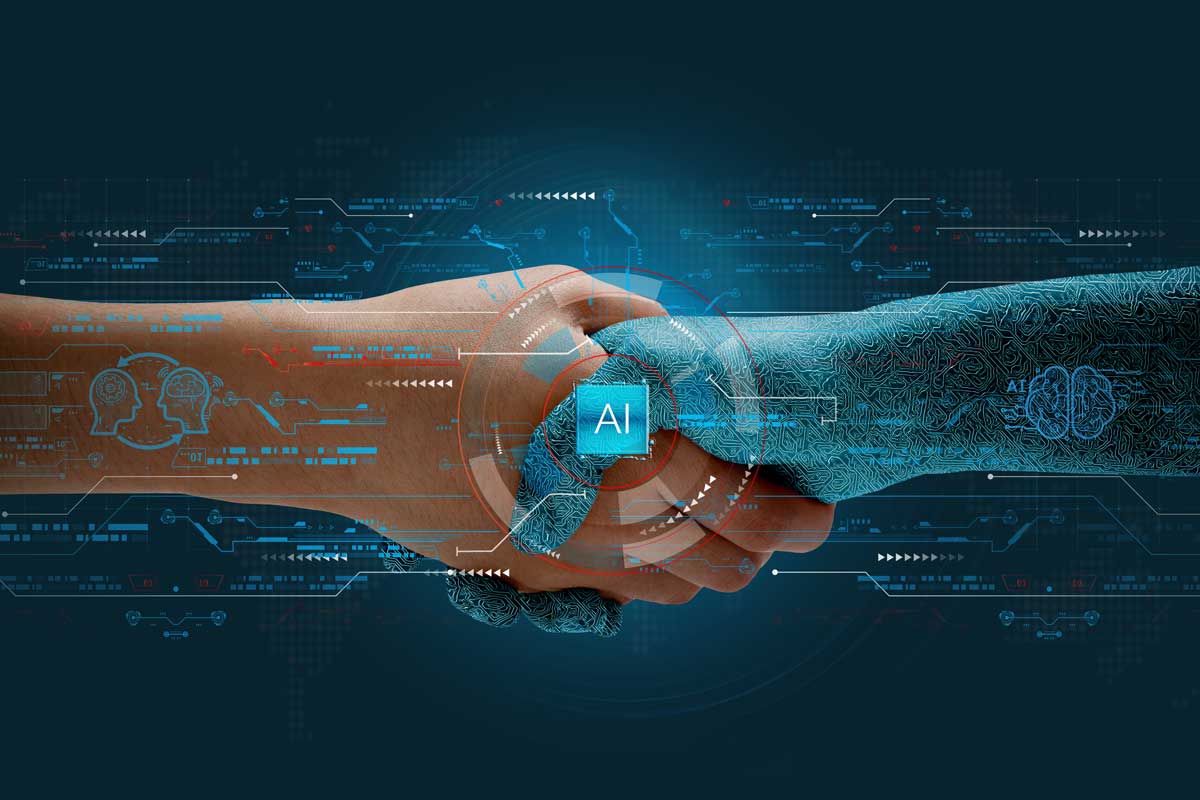I worked as a management consultant for Price Waterhouse & Co. in the late 1970’s and early 1980’s. As a recently minted MBA who was also a CPA, much of my work involved building financial forecasting models utilizing time sharing software. In October of 1979, VisiCorp released a product for the Apple II personal computer called VisiCalc. It was the first electronic spreadsheet program for personal computers.
By March of 1980, many Price Waterhouse offices across the U.S. purchased Apple II’s (and later Apple III’s) solely to use VisiCalc. Many of those purchases were classified as calculators to avoid the firm’s restrictions on buying computers. Eventually, PW formed a microcomputer committee (of which I was invited to be a member) to determine policies for usage and procurement as well as offer advice for how to utilize the software for consulting engagements.
Fast forward to today. The release of ChatGPT and other widely available AI tools reminds me of the frenzy around the release of VisiCalc. While ChatGPT may be the first widely acknowledged AI tool, it won’t be the last. After VisiCalc, Lotus123 was released shortly after the IBM PC in late 1981. Lotus took advantage of the higher capability IBM hardware (memory and disks) and was marketed as a three-in-one software package with a spreadsheet, database functionality, and the ability to create charts and graphs. Lotus replaced VisiCalc as the top selling pc spreadsheet until, in 1987, Microsoft released Excel v2.0 for Windows and within a year was the market leader for Windows-based computers.
Ignore AI at your risk. In many ways, my quick acceptance and learning of pc-based spreadsheets accelerated my career. The tools allowed me to turnaround work faster and be assigned to engagements that allowed me to showcase my financial acumen. I also learned about computers; after all, the first Apples and PCs required you to take them apart and swap out items for increased memory, new processors, new hard drives, etc.
I think we are poised for a similar awakening with large language model AI systems. Companies will value employees who have explored the AI offerings and are able to suggest solutions that utilize AI to be more responsive to customers/clients as well as help them solve sticky or time-consuming problems.
I read three articles related to AI use in education this week. I’ll provide a few summaries of each and a conclusion at the end.
We’re Asking the Wrong Questions About AI
The first article was an opinion piece written by Paul LeBlanc and published in Inside Higher Education. The article is titled “We’re Asking the Wrong Questions About AI.” The subtitle is “It’s not only about academic integrity: higher ed faces much bigger challenges in the face of frightening questions about the future of the knowledge workforce.”
Mr. LeBlanc leads off his piece with a story about a visit last year to Delhi, India where he met with a global consulting firm partner who stated that India’s plan to complete globally depended on its strategy to be the world’s source for offshoring knowledge work. Now that ChatGPT and other large language model artificial intelligence systems have been released, Mr. LeBlanc writes that “India’s strategy…may have just gone off the rails.” He further writes that “these recent developments in AI have the potential to displace humans from whole categories of knowledge work.”
Reminding readers that higher education is a knowledge work industry, Mr. LeBlanc adds that colleges know that knowledge-based jobs carry the greatest status and rewards while human focused jobs pay less and carry less status. He further writes that the immediate reaction in higher ed has been to “express concerns about the integrity of the college application essay and how to rewrite the honor code to prohibit ChatGPT.” Those are myopic concerns.
Mr. LeBlanc poses four questions:
- What is the role of knowledge when all knowledge is immediately available?
- Will ChatGPT drive colleges and universities to competency-based models of education in which what students can do with what they know becomes the key question?
- How do we rethink the levels of cognitive ability our students must now possess?
- How do we raise the cognitive bar in field after field, teaching students how to use their new algorithmic power and how to access the output?
He writes that “curricula across a wide range of fields are being rendered out of date at this very moment; we just don’t know in what ways yet.”
Mr. LeBlanc provides several examples of how his institution, Southern New Hampshire University, is using AI. He writes that there is no lack of administrative processes that can be automated now, but there are implications for instruction, tutoring, advising, publishing, and more. He fears that AI will displace more higher order jobs than there will be higher order jobs created.
If there’s a silver lining, Mr. LeBlanc writes that we have distinctly human jobs that AI cannot replace. These human jobs will need to be paid better as well as better respected. There are many roles for university faculty members to help society plan for this paradigm shift, writes Mr. LeBlanc. The knowledge silos that encumber academia will not serve colleges well when “we need a holistic approach to a technology that changes everything.” Universities are about to go through a seismic change, and they need to be prepared.
AI Is Impacting Education, but the Best Is Yet to Come
The second article was also an opinion piece published in Inside Higher Ed. Ray Schroeder wrote that “Generative AI already creates lesson plans, grades assignments, advises students, and answers learners questions. Can it competently take on class management and other associated administrative tasks?”
I have known Mr. Schroeder for two decades thanks to his active development of online courses and the technology and pedagogy that enhances their quality while he was a professor at the University of Illinois at Springfield and an active contributor to the Online Learning Consortium. Since his retirement from UIS, he has served as Senior Fellow for UPCEA. He is well qualified to evaluate technology.
Mr. Schroeder wrote that he keeps three different versions of Generative AI on his laptop and phone and uses all three daily. He pays $20 per month for ChatGPT Plus. Another app he uses is Perplexity. He uses the latter because of its academically similar citations in its responses. You.com is another tool that he uses which has a built-in image generator. ChatPDF allows users to upload pdf files and analyze their content through summaries or specific questions. Mr. Schroeder is using and learning to use various AI tools to enhance his already substantial knowledge about ways to enhance online learning.
It’s much more likely that faculty will use ChatGPT to enhance their teaching and research than students will use it to cheat wrote Mr. Schroeder. He cited a recent study where the researchers applied an AI Occupational Exposure measure to determine which human requirements for a position overlapped the most with generative AI functions. In one case, 14 of the top 20 occupations were faculty positions.
Mr. Schroeder wrote that much of the interesting work will be to design interfaces to adapt the technology to actual work roles in supportive and possibly replacement modes. He noted that generative AI will play an important role in future research and asked what status will we give it?
Khan Academy announces GPT-4 powered learning guide
Sal Khan announced a limited pilot of a GPT-4 powered learning guide on his YouTube channel. The learning guide is called Khanmigo. Teachers and students are invited to help test the tool to enhance it before its first widescale launch. Sal also recorded a demo of himself using the tool. You can join the waitlist to use it or subscribe to the newsletter describing it at Khan Academy. Khan notes that the tool will take teaching to the next level with AI-guided lesson planning and insightful student feedback. It will also free up teachers’ most important resource – time. If I was a teacher at any level, I would sign up for the waitlist to use Khanmigo immediately. After I thought about it for a second, I signed up anyway. The more I know about these tools, the more I will be prepared for life or teaching.
From my perspective, the three articles I reviewed above approach the impact of AI from slightly different perspectives – societal impact, teaching impact, and learning impact. Paul LeBlanc is a well-known college president of the second largest university by enrollment in the U.S. He also has an academic background in IT if my memory is correct. Ray Schroeder has been a leader in the Online Learning Consortium for more than two decades. Sal Khan has provided online tutorials for millions of K-12 students (and their parents for decades). If you have no interest in AI personally because you are in the sunset of your career, forward these articles to someone you know who is much more at risk, career-wise or company-wise. Everyone else would be wise to explore ways in which they or their employees can work with these tools. They’ll get better and better and like the spreadsheets I mentioned, the better AI tools will replace the early ones. It’s better that you must replace or enhance the AI tool you’re using, than find that your job is being replaced. Good luck!











